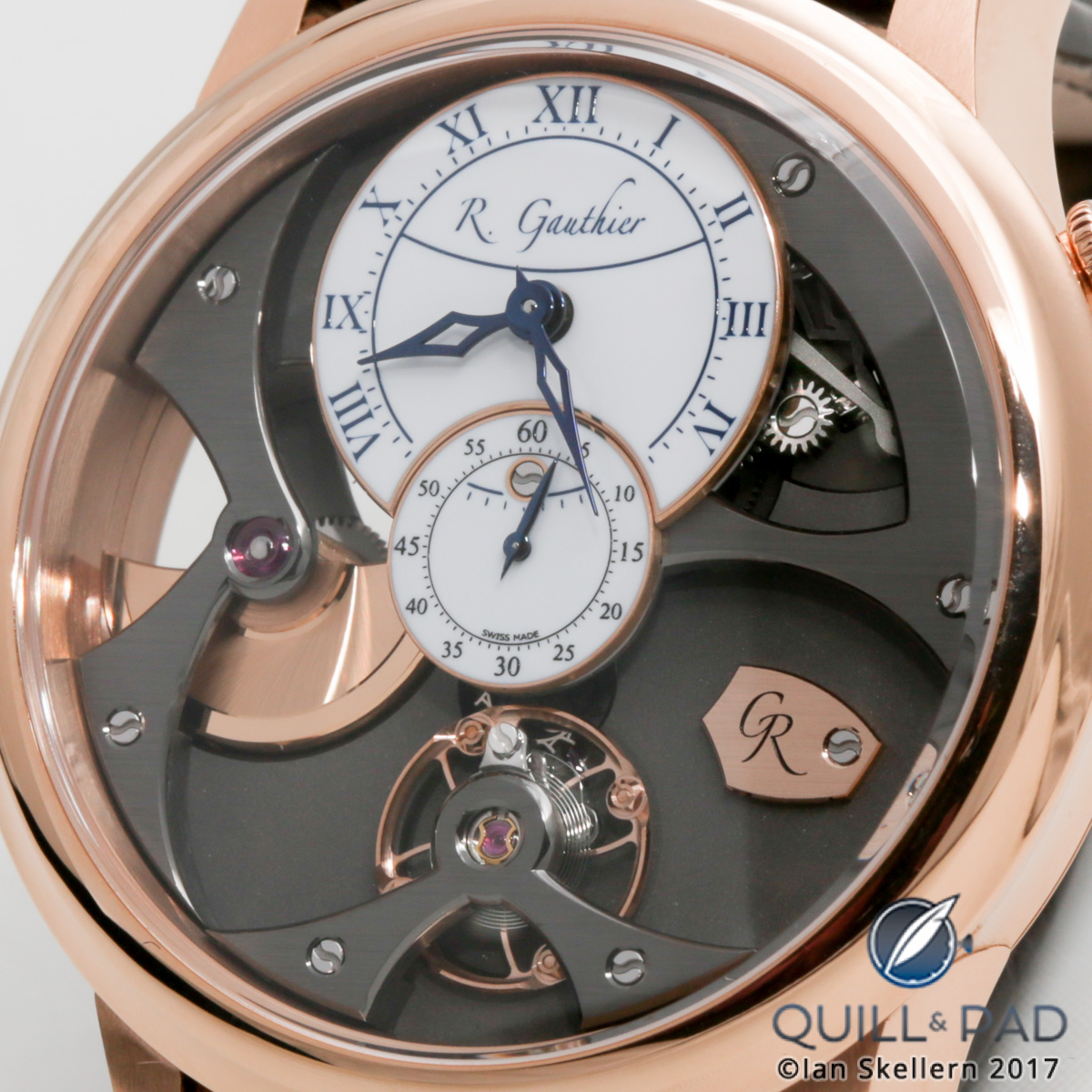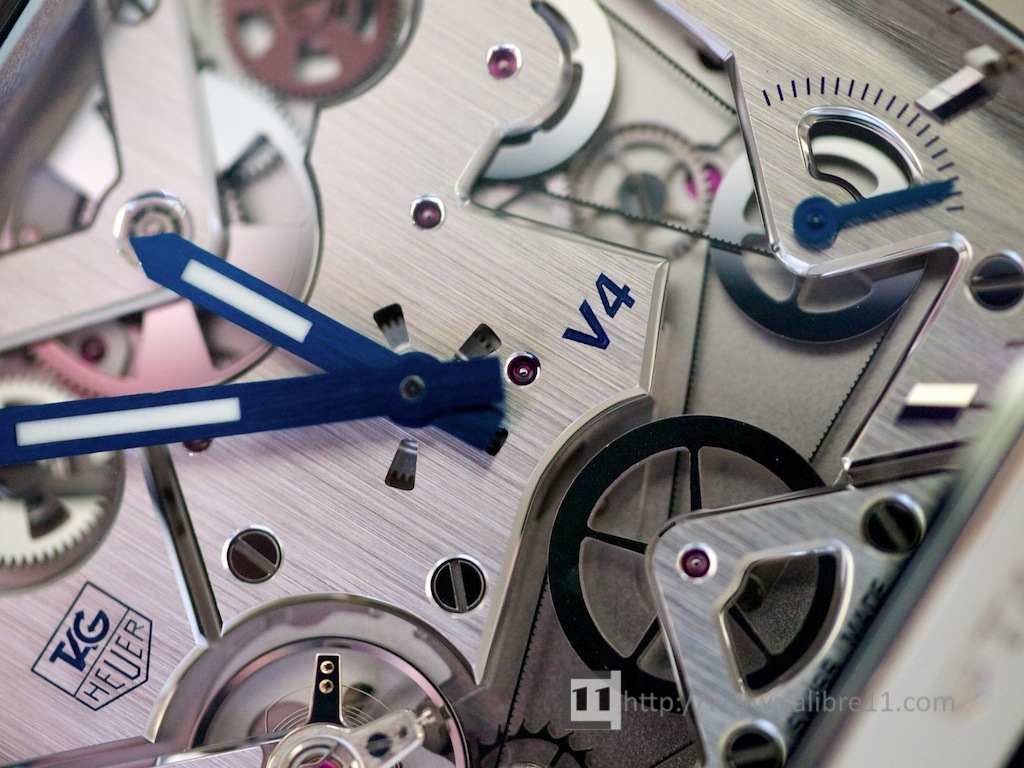
With the benefit of hindsight, we can now say that the Monaco V4 Concept of 2004 marked a turning point for TAG Heuer. Yes, TH had shown some innovative Concept watches before (The Micrograph of 2002 and the Monaco 69 in 2003), but the audacious V4 was the first sign that the “new” TAG Heuer was serious about re-establishing its credentials as a manufacturer and designer of advanced mechanical movements.
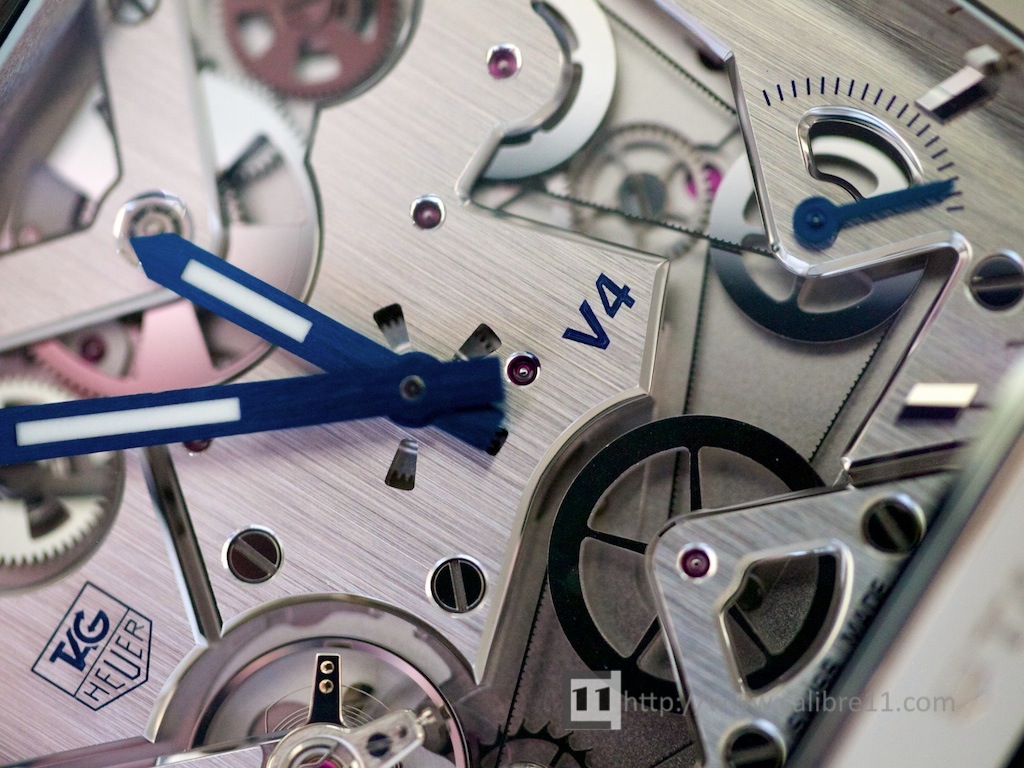 Since 2004 TAG has shown a brace of innovative movements- the Calibre 360, the Pendulum, the Mikrograph and Mikrotimer- but it all started with this watch.
Since 2004 TAG has shown a brace of innovative movements- the Calibre 360, the Pendulum, the Mikrograph and Mikrotimer- but it all started with this watch.
So advanced was the watch that most people though that it would never make it into production for two reasons. Firstly because it was believed that the belt system wouldn’t provide the necessary reliability and secondly because this incredibly innovative system was being put forward by TAG Heuer rather than an established manufacture.
What did TH know about designing and making a movement, let alone one as complex as the V4?
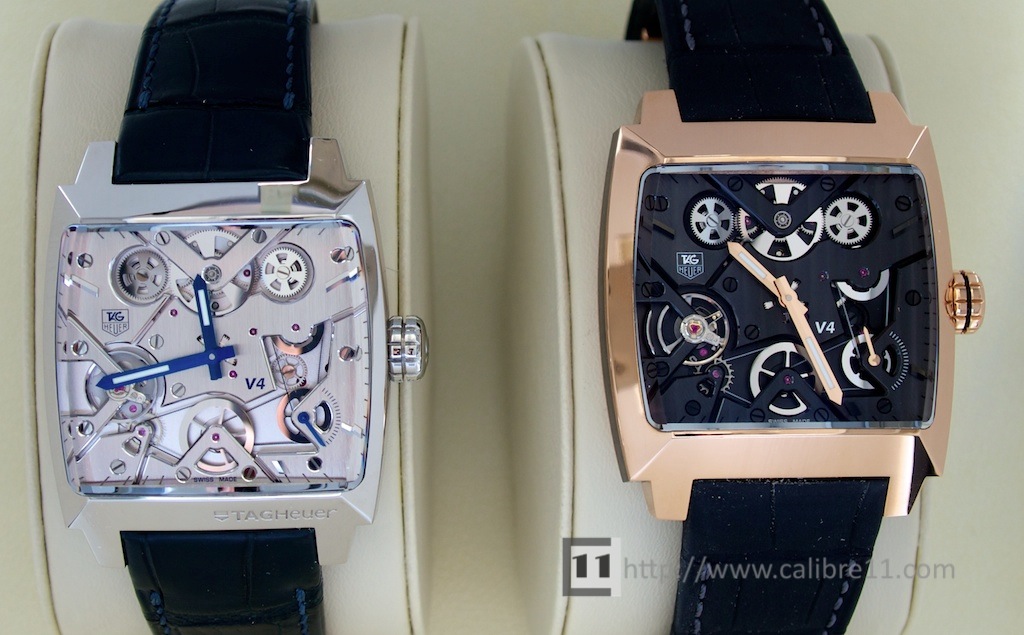 The story of the watch started out with an R&D think-tank established in late 2001. The company was only a few months into its life as part of LVMH and had just appointed a new CEO- Jean-Christophe Babin. As Jean- Christophe told Calibre 11, one of the first things he noticed about TAG Heuer was that the company had lost its reputation as a watchmaker- and he and the new team was determined to re-establish these credentials. The goal was far more ambitious than just designing and building an in-house movement: The goal was to re-invent some of the basic principles of watchmaking.
The story of the watch started out with an R&D think-tank established in late 2001. The company was only a few months into its life as part of LVMH and had just appointed a new CEO- Jean-Christophe Babin. As Jean- Christophe told Calibre 11, one of the first things he noticed about TAG Heuer was that the company had lost its reputation as a watchmaker- and he and the new team was determined to re-establish these credentials. The goal was far more ambitious than just designing and building an in-house movement: The goal was to re-invent some of the basic principles of watchmaking.
Part of this think-tank was Jean-François Ruchonnet, an innovative designer and computer-imaging expert, who is also known for the equally amazing Cabestan vertical tourbillon. It is Ruchonnet who took his inspiration from cars and imagined a new type of watch movement that used belts instead of the traditional gears. Assisting him in these early stages was master watchmaker, Philippe Dufour. Together with the TAG Heuer team, they turned an interesting idea into a concept and then the hard part- into a movement that would work on the wrists of customers- the Calibre V.
The Calibre V Movement
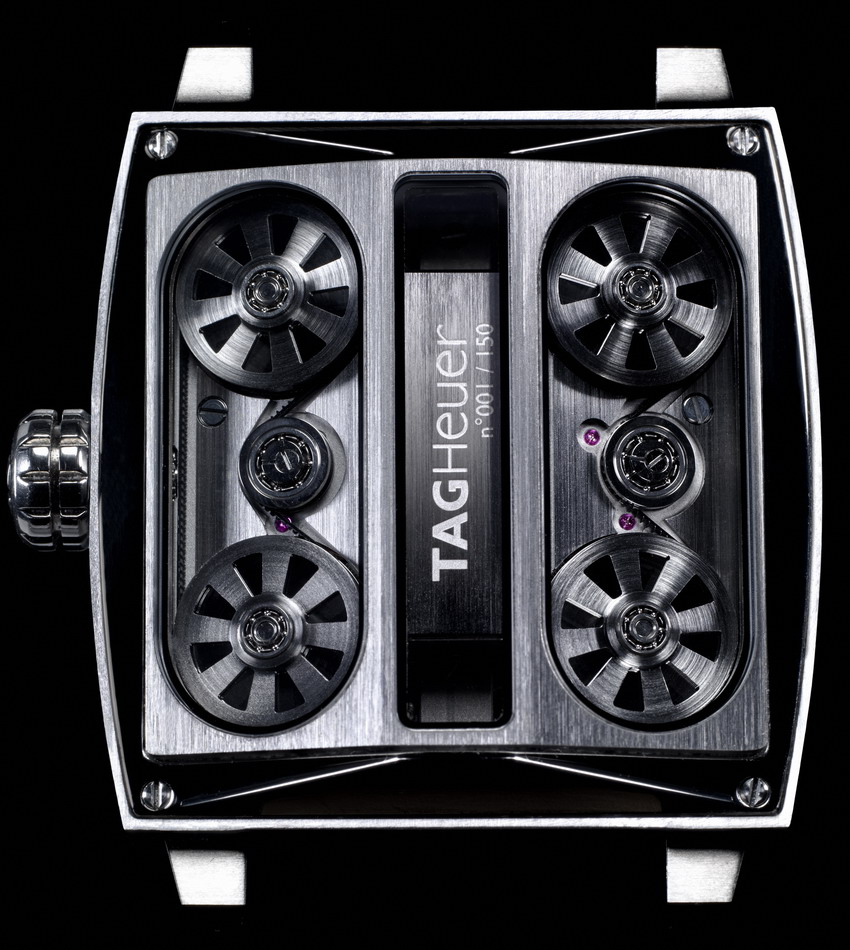 Think of the Monaco V4 as a watch designed around a movement. The Calibre V is radically different to traditional movements, which typically rely on a system of gears powered by a rotating oscillating weight, with friction reduced by the use of synthetic rubies. The Calibre V takes a totally different approach on each of these.
Think of the Monaco V4 as a watch designed around a movement. The Calibre V is radically different to traditional movements, which typically rely on a system of gears powered by a rotating oscillating weight, with friction reduced by the use of synthetic rubies. The Calibre V takes a totally different approach on each of these.
The first thing that you notice sitting in the centre of the movement is a tungsten ingot that slides up and down on rails. A gear system on the side of the weight transmits this up-and-down movement into a rotating movement. The movement has four barrels set at a slight “V” angle (about 12 degrees), like the cylinders of a V6 or V8 engine and is the inspiration for the name of the watch.
The power is transmitted by a series of micro-thin belts, which were one of the most challenging parts to getting the movement to work. The first design had belts that were too thick and created too much friction. The belts are one of the few parts that TAG Heuer does not make in-house, being supplied by a company in the Defence sector. Each one of these 13 alloy belts can support a weight of more than 40 Kilos.
The second strategy to reduce friction was to replace the traditional synthetic rubies with micro ball-bearings- again, taking its inspiration from the automotive world.
The movement and watch are hand-assembled in a special haute horlogerie workshop at La Chaux de-Fonds. Most of the components, including plates, are also engineered and machined on site by TAG Heuer.
2004: The Prototype
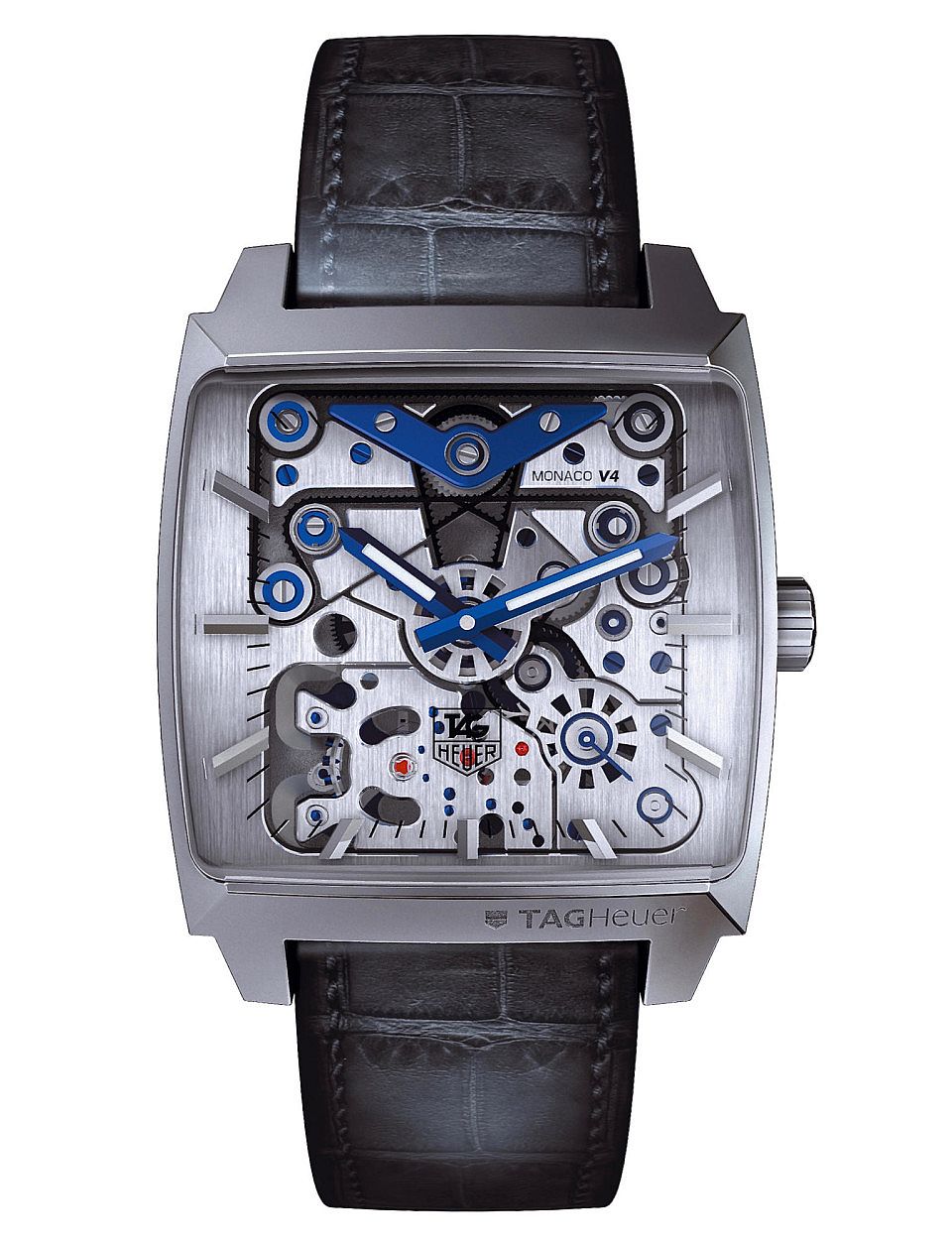 The watch caused a huge stir when it was shown at the 2004 Basel show. Not only did the watch have an innovative movement, but it housed this movement in a very different style of Monaco case. The Monaco case hadn’t really changed since its introduction in 1969. Yes, the re-edition of 1997 was a softer design that the original, but in essence it was the same design philosophy. The V4 set a new design template for the Monaco series- a 3D shape with sloping angles and a fantastic sapphire crystal that wraps into the case.
The watch caused a huge stir when it was shown at the 2004 Basel show. Not only did the watch have an innovative movement, but it housed this movement in a very different style of Monaco case. The Monaco case hadn’t really changed since its introduction in 1969. Yes, the re-edition of 1997 was a softer design that the original, but in essence it was the same design philosophy. The V4 set a new design template for the Monaco series- a 3D shape with sloping angles and a fantastic sapphire crystal that wraps into the case.
The 39mm V4 case set the look for the Monaco as a modern, innovative design and not just a homage to the past and has been adopted by several other models, such as the non-Chronograph Monaco in 2004/5, the LS and the Twenty-Four.
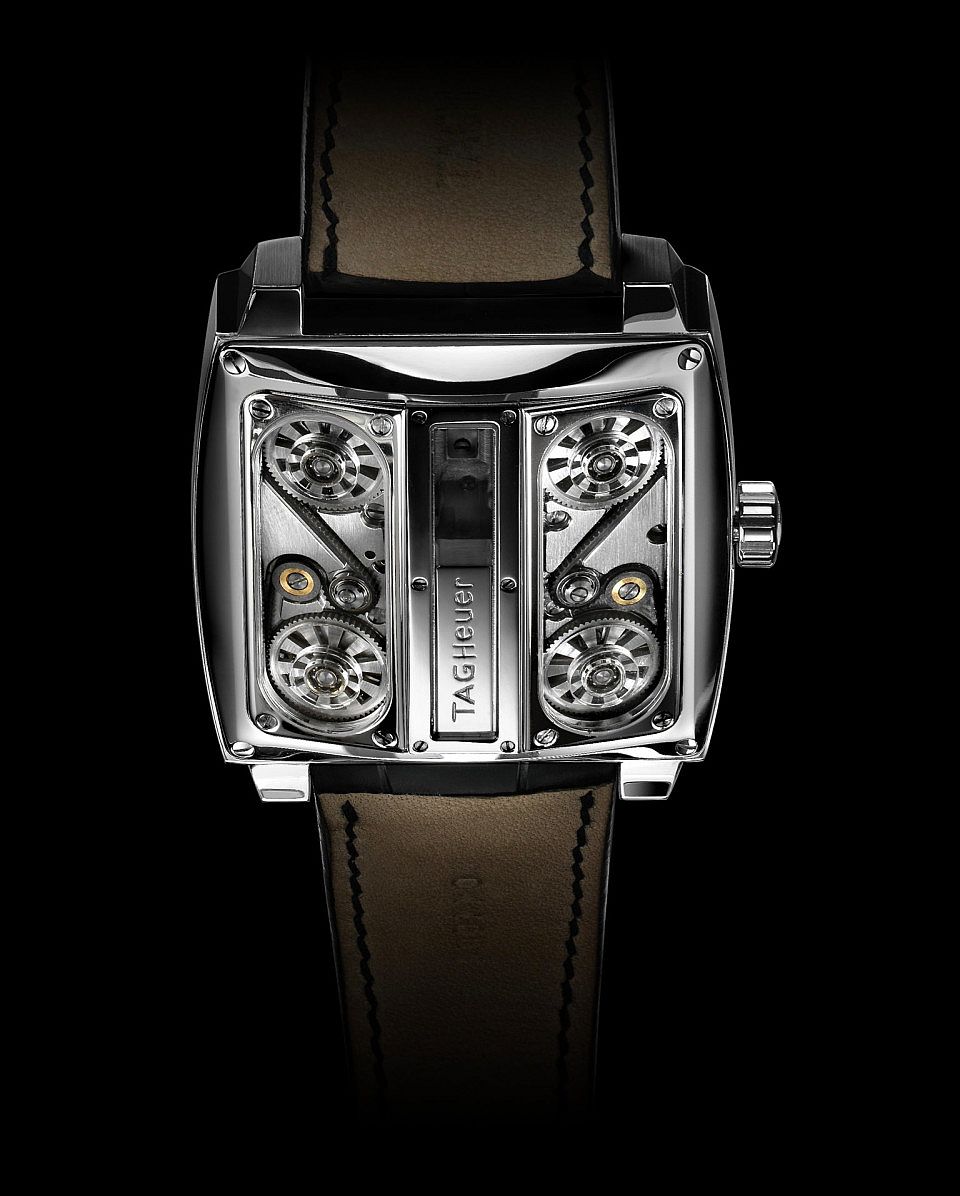
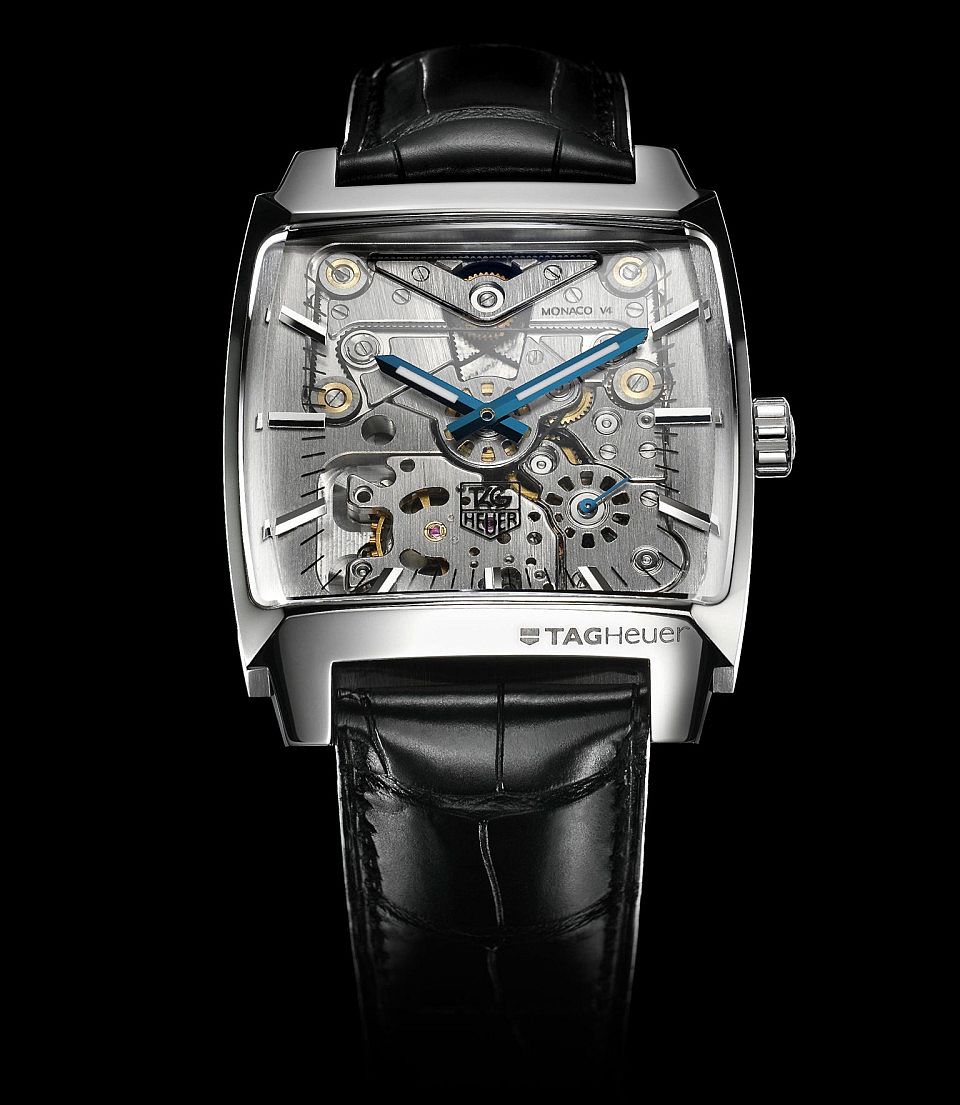 The V4 featured a TAG Heuer logo etched into the front crystal- a feature that would be dropped on future iterations.
The V4 featured a TAG Heuer logo etched into the front crystal- a feature that would be dropped on future iterations.
2007: Pre-Production
Against all expectations, TAG Heuer did deliver a working concept V4 at Baselworld 2007- three years after the first showing.
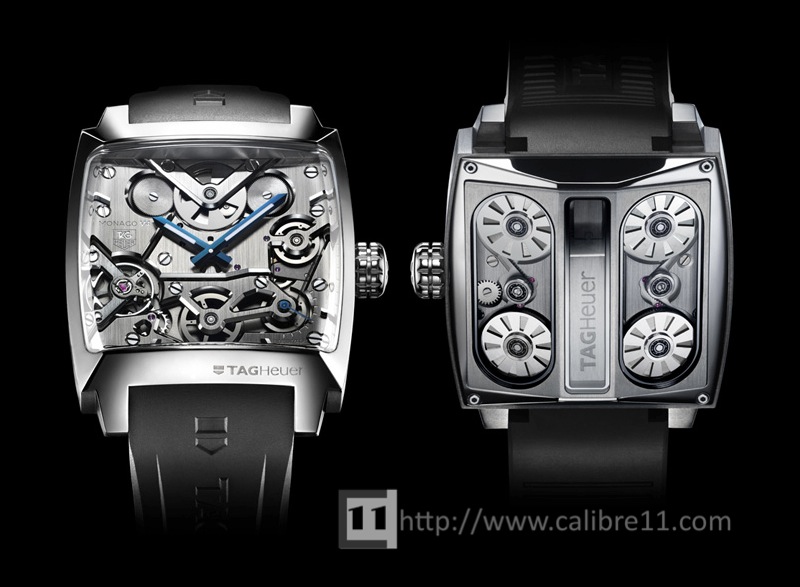
While the look and feel of the watch stayed true to the initial 2004 design, the reality was that the watch had been totally re-designed. Below you can see the evolution of the design from the first concept in 2004 (left), the 2007 pre-production watch (centre) and finally the 2009 production watch (right).
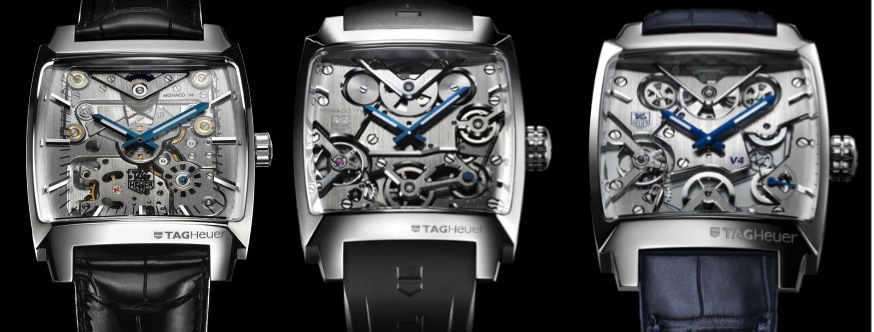
2009: Production Model
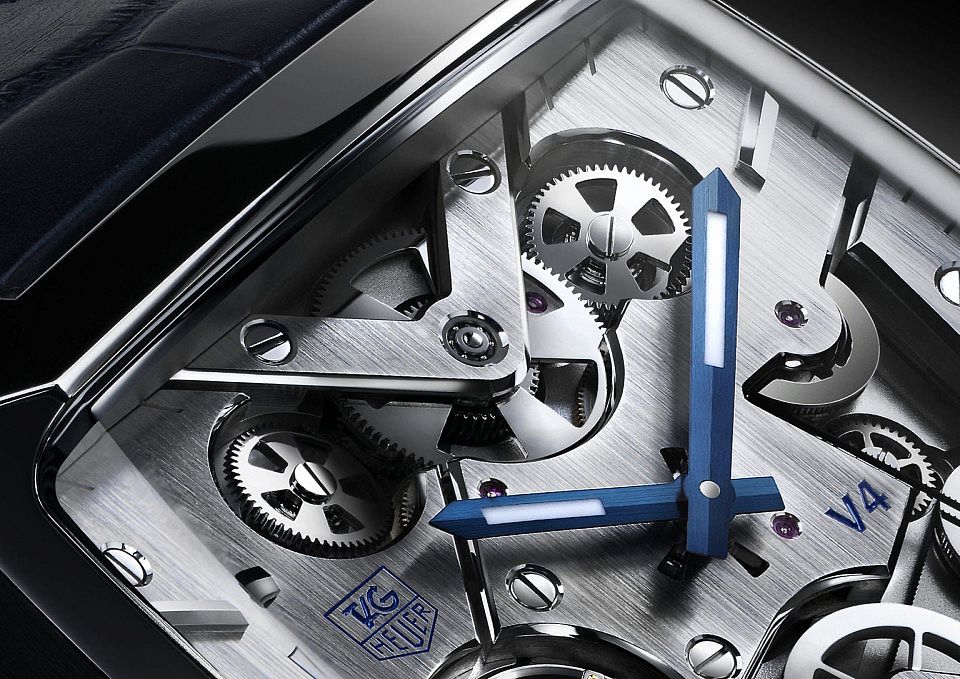
So after five years of testing and refining, the Monaco V4 was finally ready for release in 2009, with the first watch being auctioned at the “Only Watch” Charity auction in September 2009. The watch was a Limited Edition of 150 pieces to be made over two years, and was set in a Platinum case with a blue crocodile strap. The price? CHF100,000.
I have seen prototypes of the V4 in the past, but on my recent trip to La Chaux de Fonds I was able to spend a hour with both versions of the watch. So, what are they like?
Well, the first thing that you notice is the weight. The Platinum V4 is by far the heaviest watch that I have every worn, and that feeling is magnified by knowing that you have a $80,000 watch on your wrist, so bumping it on the table is not a good idea.
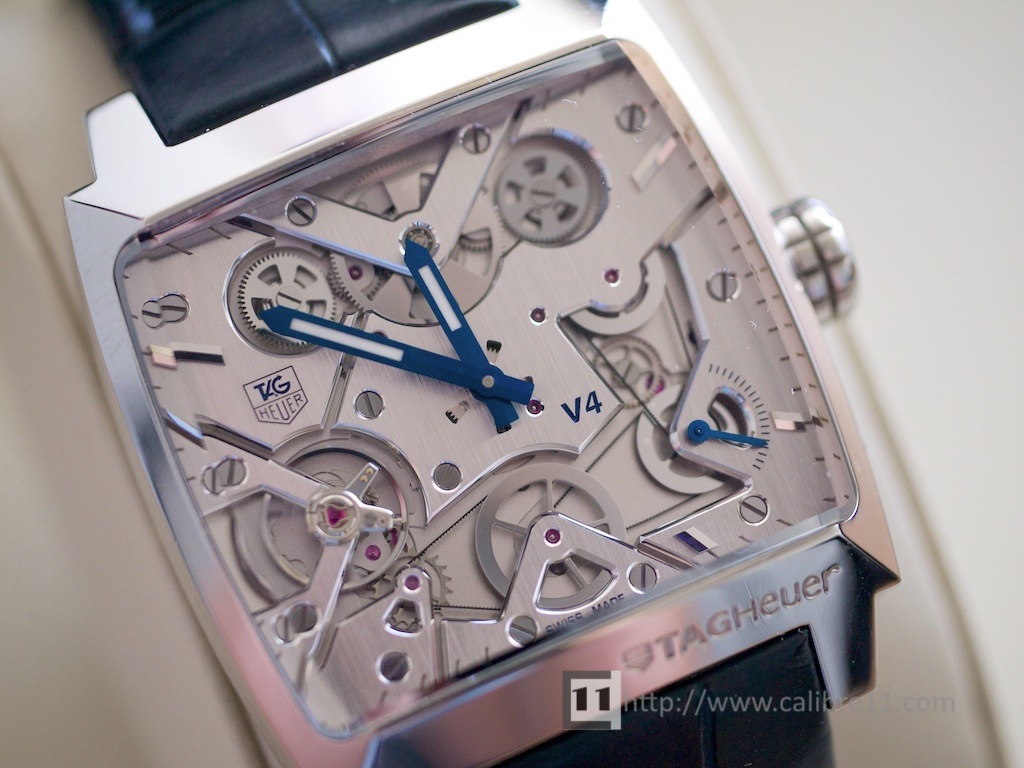
The Silver and Blue colour scheme gives the watch a cool technical look, although I have to say that I am not generally a fan of Skeleton dials (OK, this isn’t a true Skeleton dial). I also think that having the “dial” the same colour as the belts and wheels means that some of the intricate detail of the design are lost at a glance- there is no contrast.
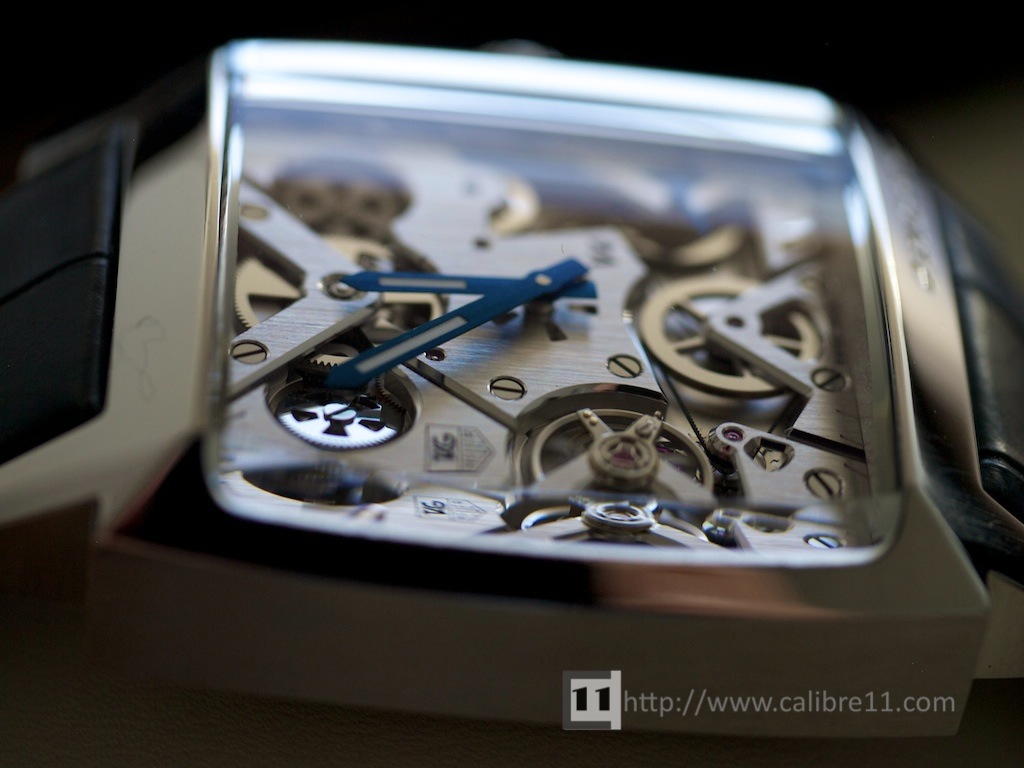
The strap has been re-inforced around the lugs to cope with the weight of the watch, and it felt comfortable- if heavy.
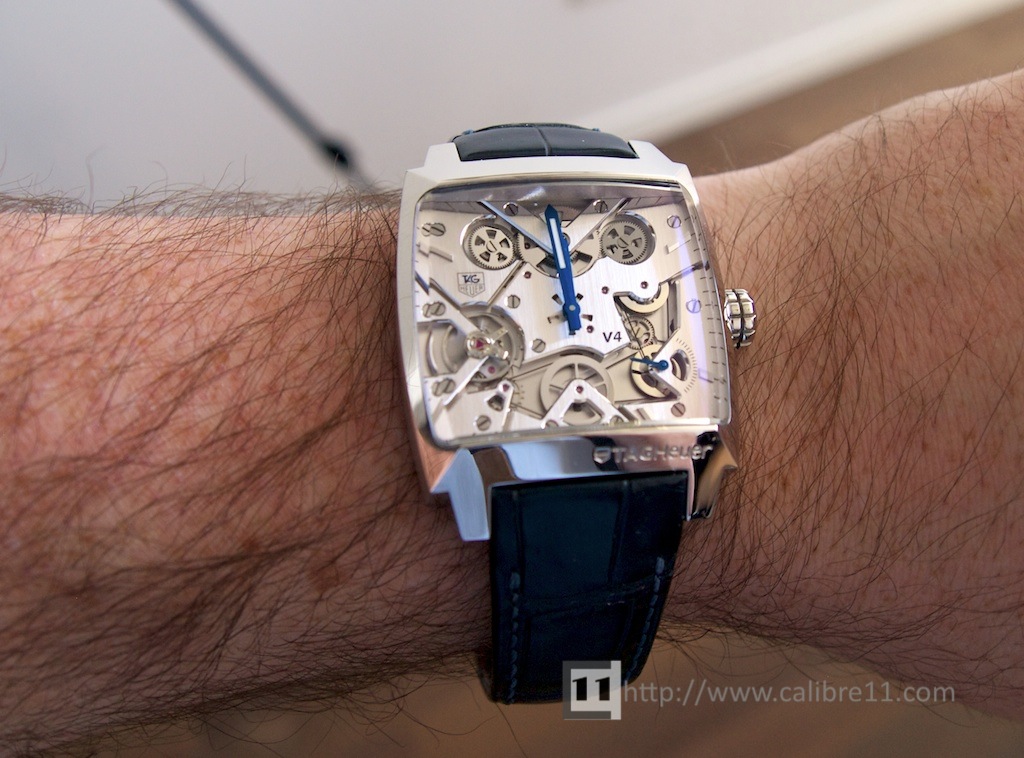
The Platinum V4 is more a piece of art than a watch- everywhere you look there is a new detail to focus on – watching the ingot slide up and down, the incredibly thin belts and the various wheels and cogs turning to power the watch. Of course, it’s beautifully finished, which is what you’d expect at this price.
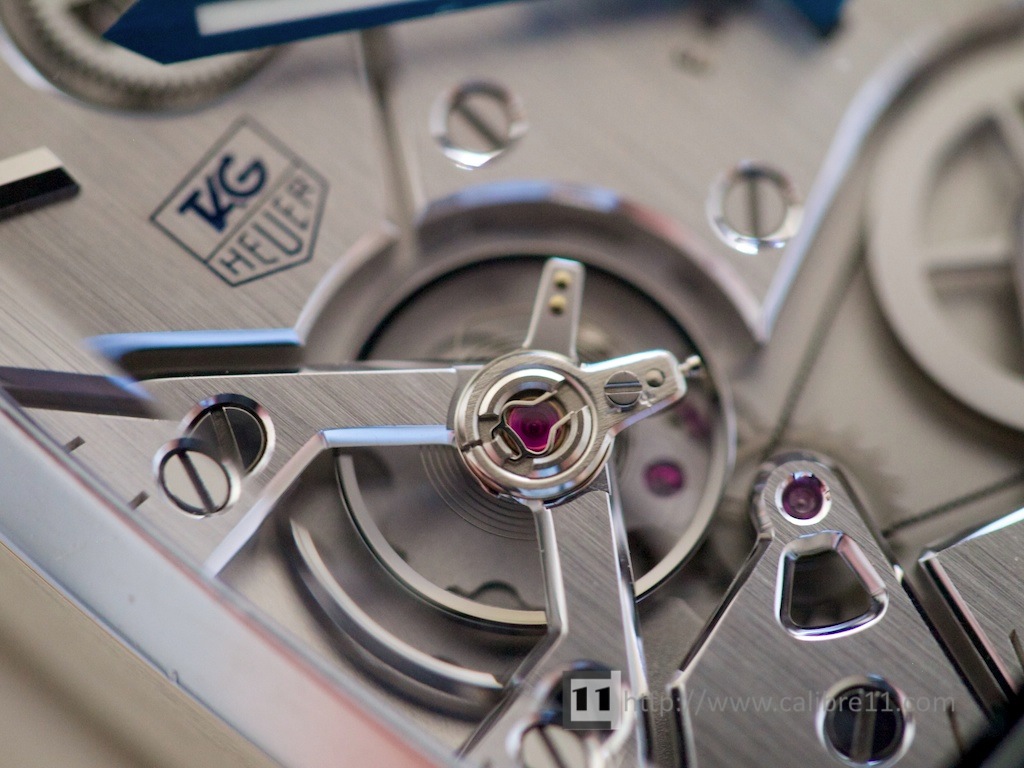
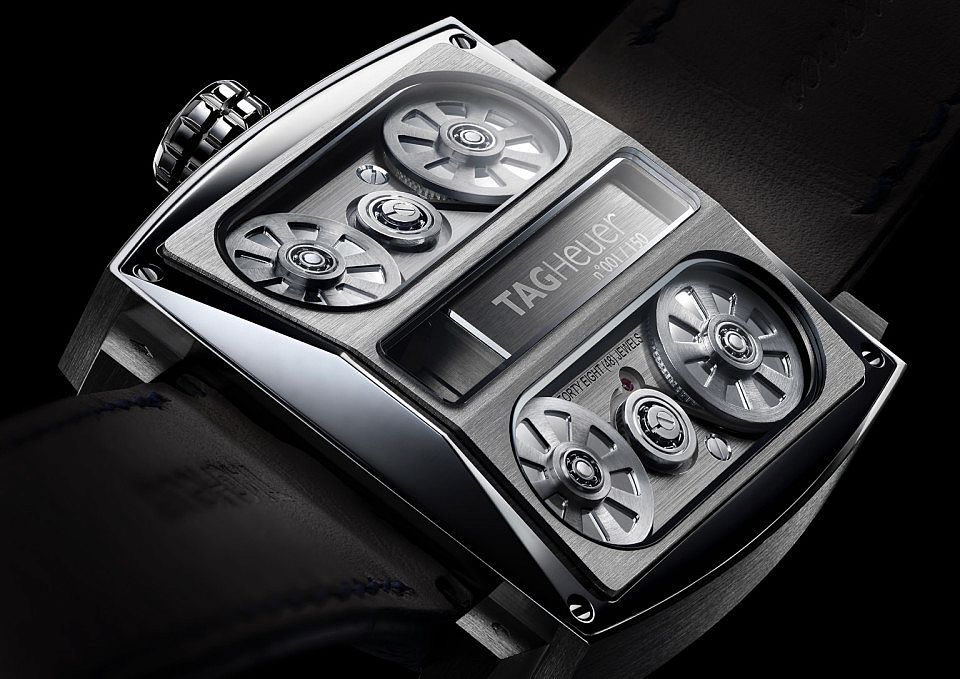
2010: Monaco V4 Rose Gold
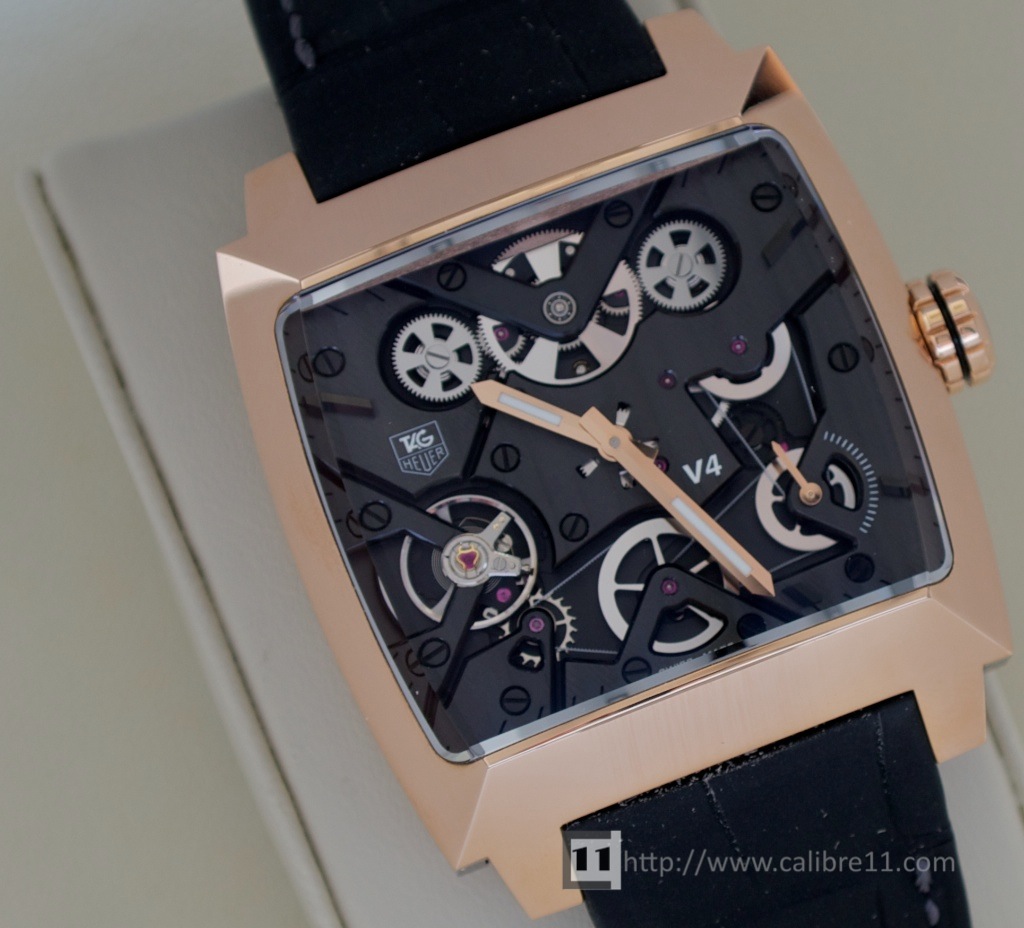
While I admired the Platinum V4, I loved the Rose Gold version. Announced late last year, the watch is a Limited Edition of 60 watches in Rose Gold, Ruthenium and Ceramic. The second V4 uses a larger case (41mm) with a few detailed design changes (for example, the case loses the TAG Heuer logo from the bottom right)
The decision to use contrasting black Ruthenium coating on the front and rear plates totally transforms the look of the watch- now the wheels and belts stand out beautifully, and its a much more interesting look than the original Platinum model.
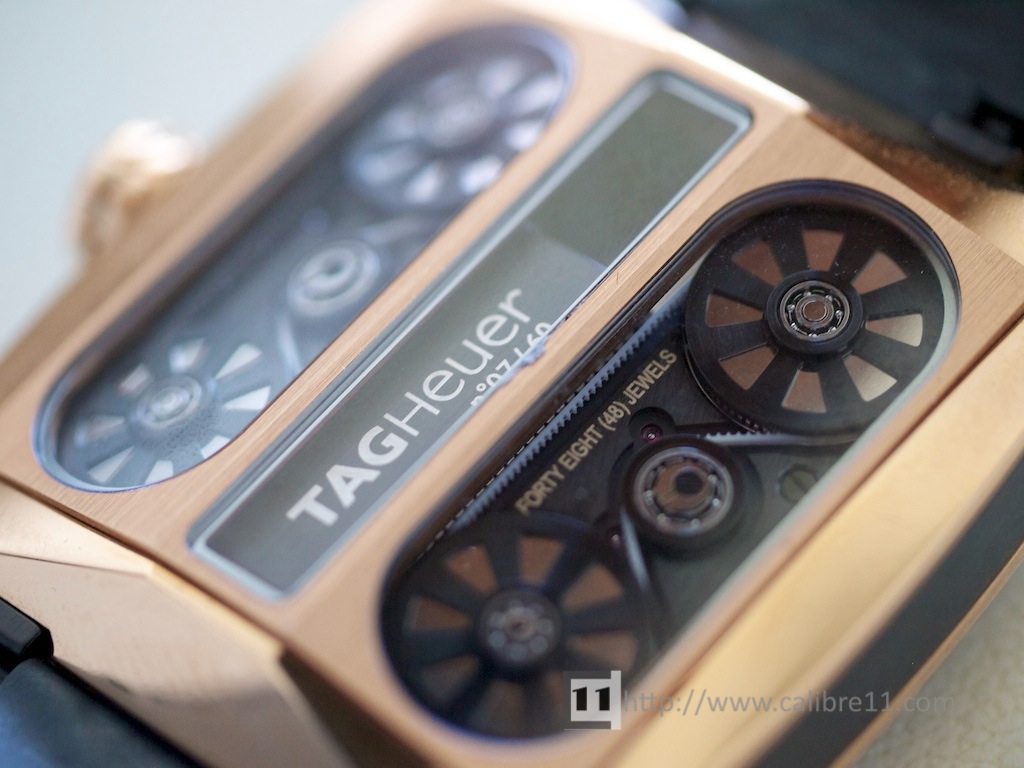
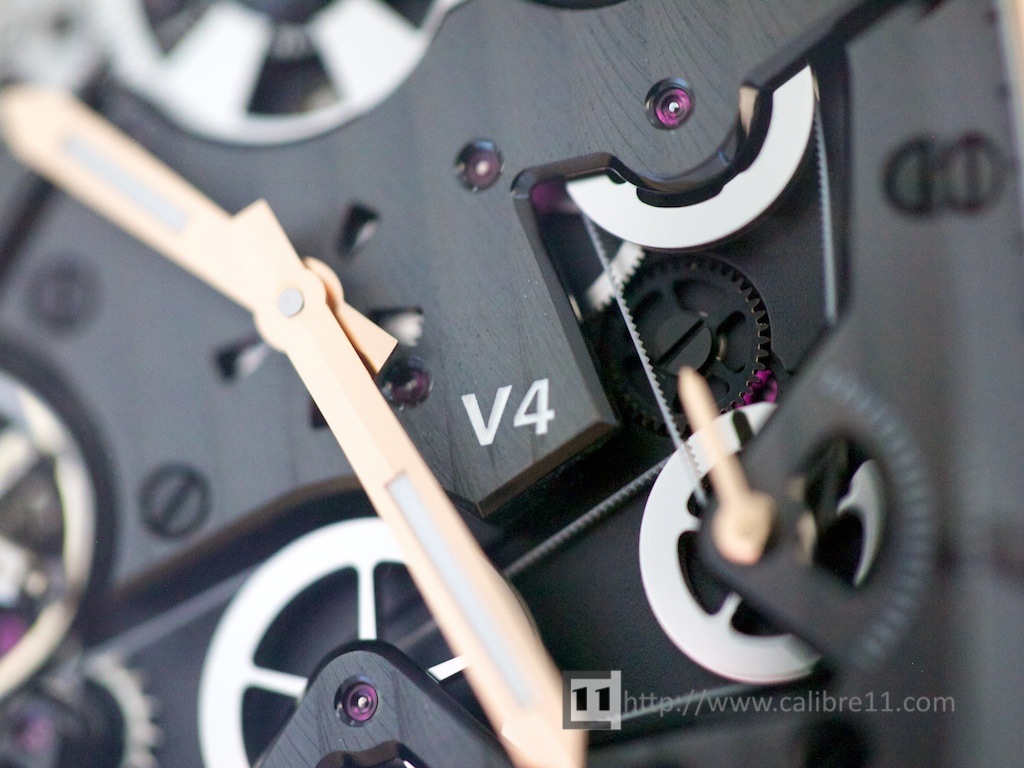
So, if cursed with having to choose between the two models- let’s be frank, if you can find CHF100,000 for a watch, you can find CHF200,000 and buy both- it would clearly be the Rose Gold model that I’d choose. I think that it looks better and its lighter than the original.
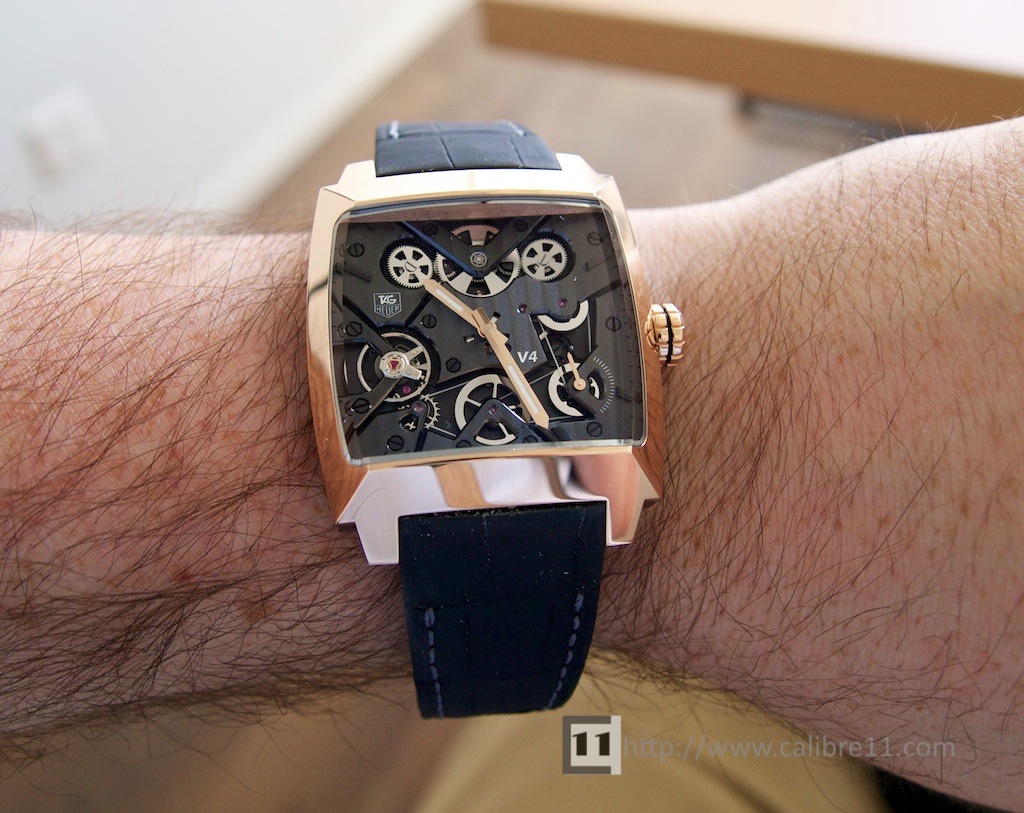
The future of the V4
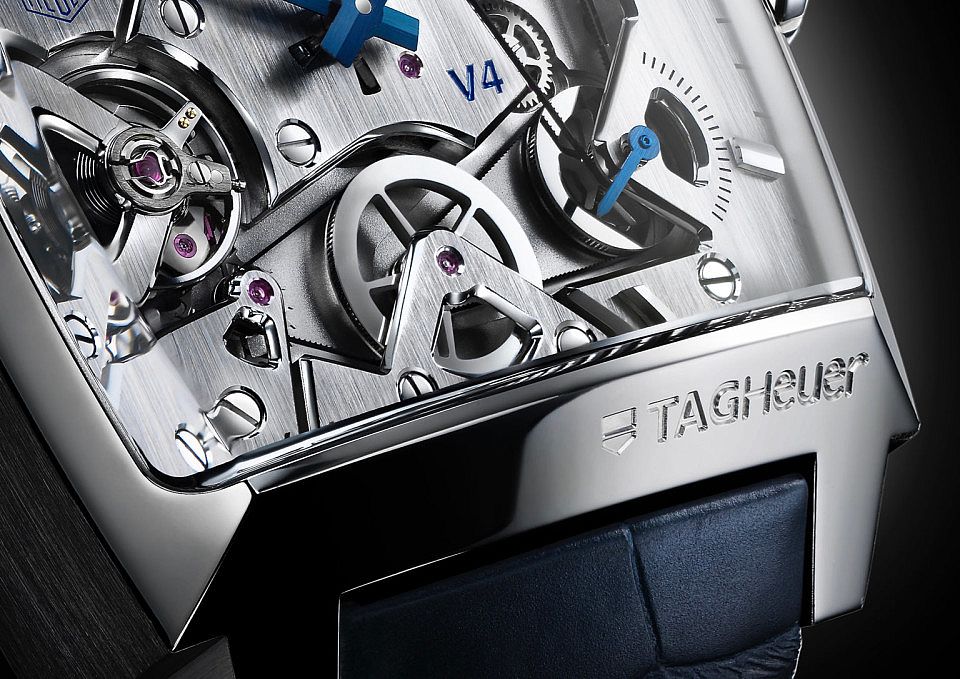
So what exactly is the point of the V4? Why has TAG Heuer- a maker of watches in the $1000-10,000 range- chosen to launch a model at this stratospheric price point, and what is the benefit for the cast majority of TH owners?
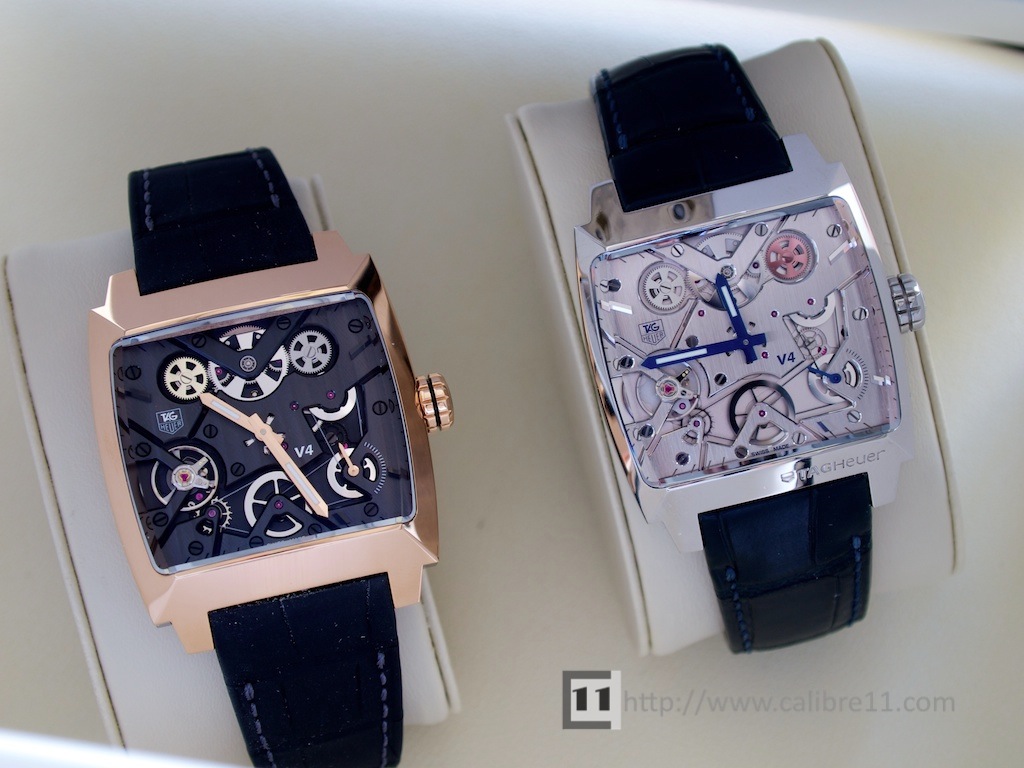
The way that I look at the V4 is that TAG Heuer needed to develop a watch like this to make a statement that it was serious about getting back its reputation as a watchmaker. Normally, you might expect this statement to be made by showing a concept watch that gets the headlines but never gets made. In this case, TAG Heuer decided to go to the next step- to make the watch, just so that it could prove that it was possible. In fact, I wonder if they would have been so determined to spend five years getting the watch to work if there hadn’t been such a dismissive reaction to the initial concept.
Its pointless wondering whether the V4 is twice as good as the up-coming Mikrograph, or ten-times as good as a Grand Carrera Calibre 36- I know that I’ll never own a V4, but I’m glad that they’re being made.
Unfortunately, its hard to see that the Calibre V movement will make its way into a much cheaper model in the foreseeable future. These watches are hand-built by a team that is about to start also making the Mikrograph and perhaps one day the Mikrotimer, so exclusivity will remain. The likely outcome is that every couple of years we’ll see a new V4 edition- new case materials, new colours and continued refinement of the movement.
Hopefully I’m wrong and we will see an affordable Monaco V4 sometime soon, but in the meantime I’m happy that I was able to wear both- even if it was only for an hour.
****

